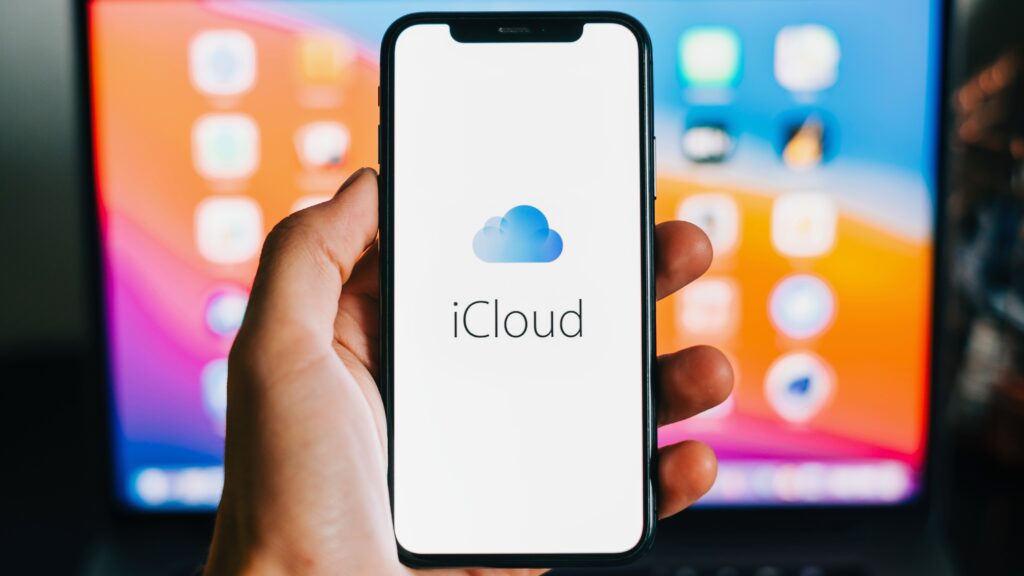
Avoid rushing to pay Apple for additional storage on iCloud, when you can free up storage on your icloud for free.
Are you running short of iCloud storage but prefer not to upgrade your plan? Discover how to optimize the space you currently have by deleting unnecessary items and performing other storage enhancements. This way, your iCloud storage won’t run out rapidly.
Whats Taking your iCloud Storage?
Before choosing to use your time rather than spending money, it is essential that you investigate the cause of your iCloud storage depletion.
To access Account Storage management on an iPhone, navigate to Settings and select [Your Name], then choose iCloud followed by Manage.
To access iCloud settings on a Mac, simply click the Apple logo located in the menu bar followed by selecting System Settings > Apple ID > iCloud. Proceed to select “Manage” to view your cloud management options.
You can find out the storage consumption of your iCloud account, mainly occupied by photos, messages, backups, apps and files. Below we’ll guide you on how to create more space for each category.
Remove outdated emails
If you happen to utilize Apple’s Mail application and have an iCloud email account, it is likely that there are numerous unnecessary emails. These messages may also consume your valuable iCloud storage space. To remove them, follow these steps:
1. Launch the Mail application.
2. Visit the Mailboxes section, then select iCloud option.
3. In the top-right corner, click on Edit and then select the emails you wish to remove.
4. First, tap on Trash and then choose the option of selecting a message from the trash.
Remove iCloud Drive Files That Are Big in Size
To avoid occupying unnecessary space on your Apple devices, make sure to review iCloud Drive regularly for any clutter.
Simply go to the Files app and tap Browse at the lower part of your iPhone or iPad’s screen. Then, select iCloud Drive and browse through each folder for deletable items.
For those using a Mac, just open Finder window then click on iCloud drive found in the sidebar sectio
Don’t fret if you delete the incorrect file by mistake – restoring deleted files in iCloud Drive is possible.
Delete outdated messages
These steps will help you free up space on iCloud by quickly tackling the storage hog, Messages ap
Navigate to your iPhone or iPad’s Settings and select Messages.
Proceed to Keep Messages and alter the setting from Forever to either 30 Days or 1 Year.
Following that, select Delete. All messages exceeding your chosen duration will be eliminated automatically thereafter.
Afterwards, we can free up some storage by deleting certain chat threads. Access the Settings menu and select “[Your Name]” followed by “iCloud” then choose “Manage Account Storage”.
From there go to the Messages section and click on Top Conversations.
Select the chats you want to delete by tapping on Edit located in the top-right corner. Afterward, press the trash icon also found on the top-right corner to remove that particular chat.
In case you don’t want to erase complete conversations, access a thread and select the person’s name at the top.
Afterwards, scroll down until Photos appear and tap See All option.
Then proceed with manually deleting any superfluous images or videos as required Similarly for bulky PDFs and other files, explore Documents section delete them manually too.
Reduce the Size of Your Picture Collection
After successfully reducing the amount of space that future photos will occupy, it is now time to begin decluttering your photo collection by removing unnecessary items.
To begin, access the Photos application and navigate to Albums > Videos. Once there, utilize the Select function located in the top-right corner to eliminate unnecessary videos.
Similarly, you can peruse other albums such as Live Photos, Bursts,Panoramas,Slo-mo , Time-lapse Screenshots, Screen Recordings etc., removing unneeded items for a significant space savings.
Finally,give Recents album in your Photo app a quick scan through and determine if any pictures could be cleared out of storage.
Remove unnecessary iCloud backups
It’s likely that if you’ve had several iOS devices throughout the years, there is a high probability that each of them has its own backup saved in your iCloud account.
These steps will guide you on how to delete backups of unused old devices.
Access Backups by navigating to Settings, then [Your Name], followed by iCloud and Manage Account Storage on your iPhone.
You’ll now be able to view the list of devices that have been backed up. Choose the device that you no longer require and click on Delete Backup. By doing so, you will eliminate this backup from iCloud.
If you’re still using certain devices, it’s possible to tap into their backups and prevent specific apps from storing data in your iCloud account.
To begin, select the device and opt for Show All Apps. Then proceed by disabling backups manually or turning them off entirely for designated apps.
Following this process will ensure that next time an iCloud backup runs, app data stored on those particular applications won’t be included in the saved files.
Conclusion
By now, you may have successfully cleared up some gigabytes of storage space on iCloud. It should suffice to steer clear from the unwelcome “iCloud Storage is Full” notifications popping up on your iPhone, iPad or Mac for a while.
However, if more room is needed then think about upgrading your plan of iCloud storage.





